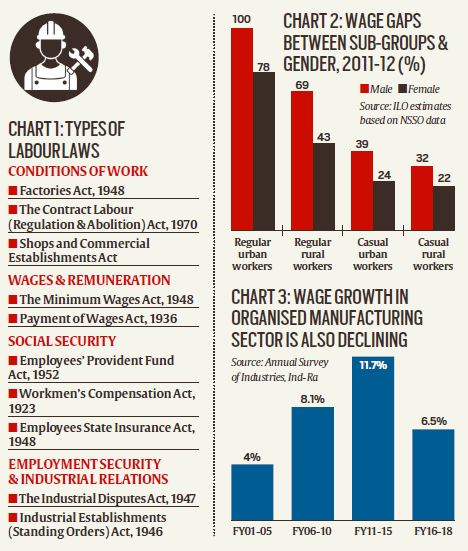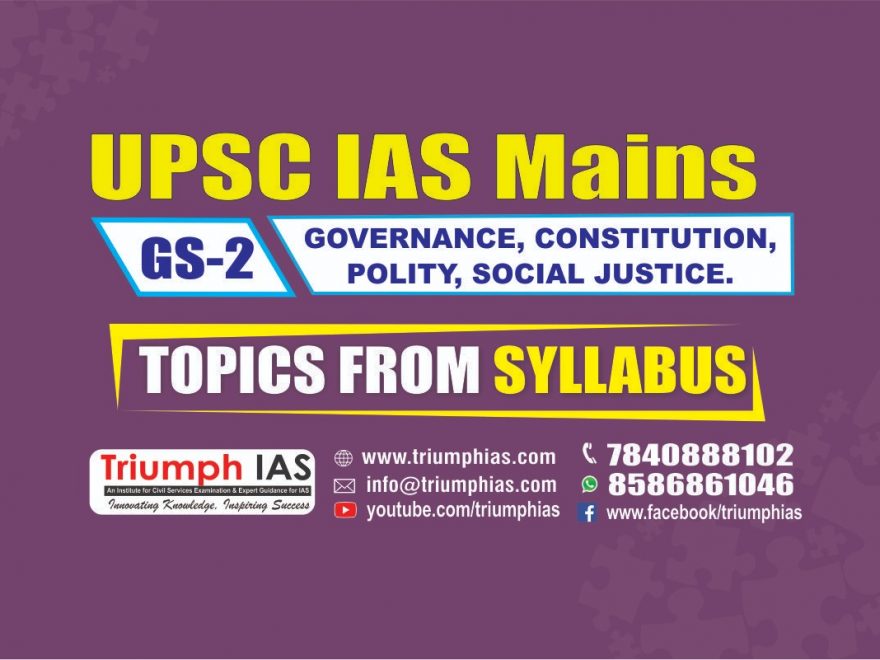B.R. Ambedkar on labour laws and its process of development
Relevance: Mains: G.S paper II: Governance
:strip_icc()/labor-definition-types-and-how-it-affects-the-economy-3305859-FINAL2-8f603436f7cf403492d2e4f8f16f5886.png)
Context:
- Soon after Independence, while the Constitution of a free India was being drafted, Dr B.R. Ambedkar, the chairperson of the Drafting Committee, was asked to prepare a note on the idea of Fundamental Rights.
- In a terse document, B.R. Ambedkar observed that thus far, the purpose of Constitutions had been to limit state power, in order to preserve the freedom of the individual.
- But this was too narrow an understanding of freedom because it ignored the fact that often, it was private parties — individuals and corporations — that exercised great sway over the economic and social life of the nation.
- B.R. Ambedkar, therefore, argued that fundamental rights must also “eliminate the possibility of the more powerful having the power to impose arbitrary restraints on the less powerful by withdrawing from the control he has over the economic life of the people” — or, more euphemistically, to tackle the “the dictatorship of the private employer”.

Labour rights:
- B.R. Ambedkar, a long-time advocate for the rights of labour, and who had been instrumental in the passage of an eight-hour working day a few years before, was writing as part of a long-standing intellectual and political tradition.
- Labour movements had been key to the successful freedom struggle, and indeed, the 1931 Karachi Declaration and Bill of Rights — a fore-runner to the Constitution — expressly placed labour rights on a par with ordinary civil rights such as the freedom of speech and expression.
- In its Preamble, it declared that “political freedom must include… real economic freedom of the… millions”. These principles eventually found their way into the Indian Constitution in the form of “Directive Principles of State Policy”, while a few of them were retained as fundamental rights.
- Prominent among these was the right against forced labour, guaranteed by Article 23 of the Constitution.
How do we understand the concepts of “force” and “freedom” in the backdrop of this history?
- A certain narrow understanding would have it that I am only “forced” to do something if there is a gun to my head or a knife at my throat. In all other circumstances, I remain “free”.
- As we all know, however, that is a very impoverished understanding of freedom.
- It ignores the compulsion that is exerted by serious and enduring differences of power, a compulsion that may not take a physical form, but instead, has a social or economic character that is nonetheless as severe.
- In such circumstances, people can be placed in positions where they have no genuine choices left. As K.T. Shah, another member of the Constituent Assembly, famously wrote, “necessitous men are not free men”.
Judicial stand:
- In 1983, the Supreme Court understood this point. The Court was called upon to address the exploitation of migrant and contract labourers, who had been put to work constructing the Asian Games Village.
- In a landmark judgment, PUDR vs. Union of India, the Court held that the right against forced labour included the right to a minimum wage.
- It noted that often, migrant and contract labourers had “no choice but to accept any work that came [their] way, even if the remuneration offered… is less than the minimum wage”.
- Consequently, the Court held that “the compulsion of economic circumstance which leaves no choice of alternatives to a person in want and compels him to provide labour or service” was no less a form of forced labour than any other, and its remedy lay in a constitutional guarantee of the minimum wage.
- The judgment of the Supreme Court in PUDR vs. Union of India, and the constitutional history that it drew upon, provides us with an important perspective from which to understand basic ideas of freedom, especially in our present context.
- A market economy is sustained by a set of laws — the laws of contract, of property, and so on.
- This legal structure ensures that capital and labour do not face each other as equals across a mythical bargaining table.
- There is a structural inequality that enables the former, going back once more to B.R. Ambedkar’s language, to “make the rules” for the latter.
- This amounts to a form of “private government”, a situation in which there exists democracy in the political sphere, but unilateral term-setting in the context of the workplace.
- In later, with the rise of the platform or gig economy, the rise of casualisation and precarious employment, and further fractures within the workforce, this inequality of power has only grown starker.
Aims of labour laws:
- The purpose of labour laws, which arose out of a long period of struggle (often accompanied by state-sanctioned violence against workers), has always been to mitigate this imbalance of power.
- The shape and form of these laws have, of course, varied over time and in different countries, but the basic impulse has always remained the same: in B.R. Ambedkar’s words, to secure the “rights to life, liberty, and the pursuit of happiness”, in both the public and the private spheres.
- In some countries, the path chosen has been to give workers a stake in private governance, through strong trade union laws and mandatory seats for labour in the governing boards of firms (“co-determination”).
- In other countries (such as India), the path has been to create a detailed set of laws, covering different aspects of the workplace, and depend upon State agencies for their enforcement.
The Indian situation:
- India’s labour law structure has been criticised on multiple counts.
- It is argued that it sets up a labour bureaucracy that is prone to corruption; that the adjudicatory mechanisms are inefficient;
- the rights that labour laws grant are effectively submerged in a creaking judicial system, thus providing no real relief;
- that the system creates an unconscionable tiered structure where a majority of the workforce, engaged in contract labour or informal employment, has very few rights, while those in formal employment have greater security, at least in theory;
- in a recent interview, it was even pointed out that many prominent labour unions prefer to arrive at an accommodation with the management, rather than represent the interests of their constituents.
- These problems certainly call for a debate on the future of labour rights, especially in a world where the rapidly changing
nature of work is already rendering old concepts of jobs and employments obsolete. - But this debate must be guided by B.R. Ambedkar’s insights that remain relevant even today, the Constitutional guarantee against forced labour, and the understanding of force and freedom that takes into account differences in power.
Way forward:
- What is very clear, however, is that the steps being taken by various State governments, ostensibly under cover of the COVID-19 pandemic, are grossly unconstitutional: various State governments are in the process of removing labour laws altogether (for a set period of time).
- What this means, in practice, is that the economic power exercised by capital will be left unchecked.
- In his Note on Fundamental Rights, B.R. Ambedkar pointed out that this would be nothing other than the freedom to “increase hours of work and reduce rates of wages”.
Conclusion:
- Ironically, an increase in working hours and removal of minimum wages are two proposals strongly under discussion.
- If the Constitution is to remain a charter of freedom, however, it must be equal freedom — and that must be the yardstick from which we measure proposed legal changes in the shadow of COVID-19.
For more such notes, Articles, News & Views Join our Telegram Channel.
Click the link below to see the details about the UPSC –Civils courses offered by Triumph IAS. https://triumphias.com/pages-all-courses.php

